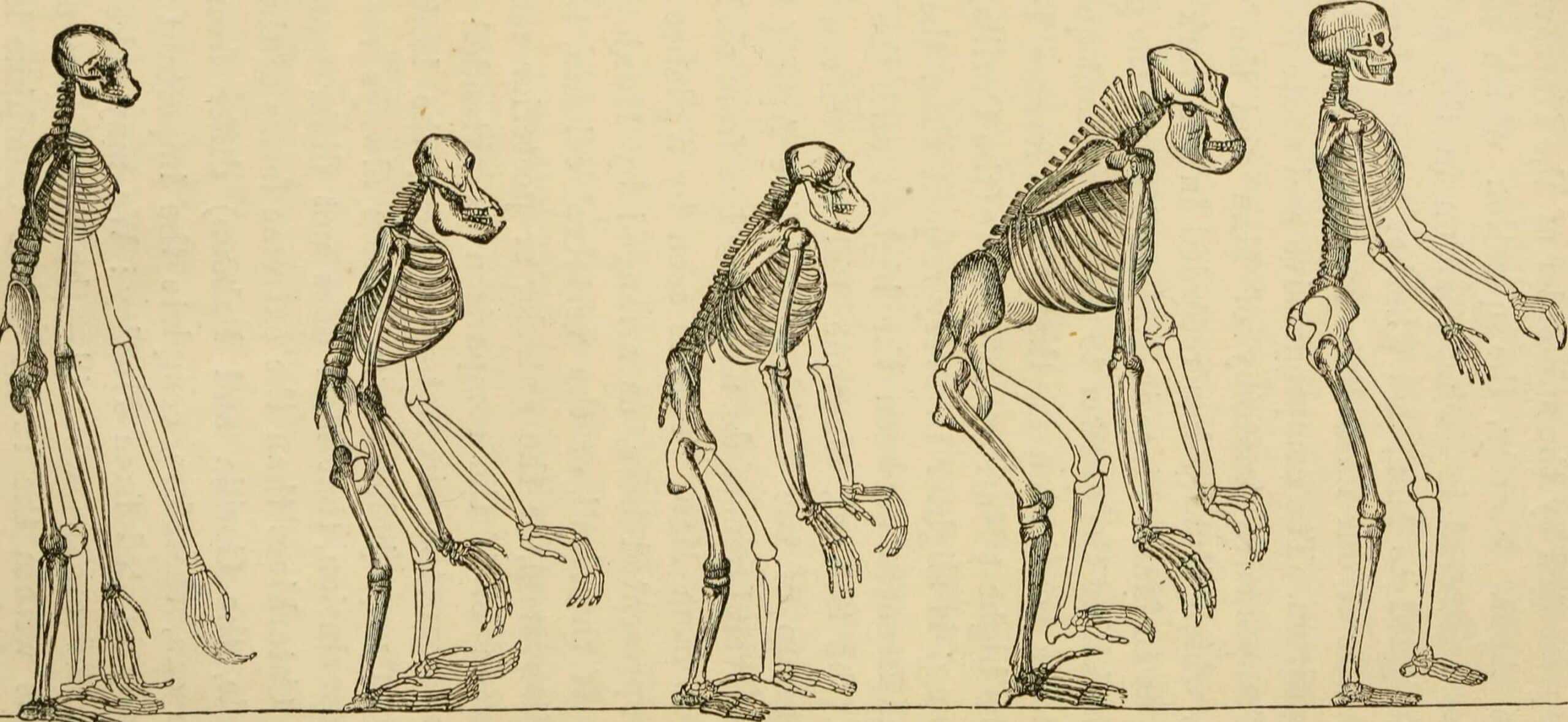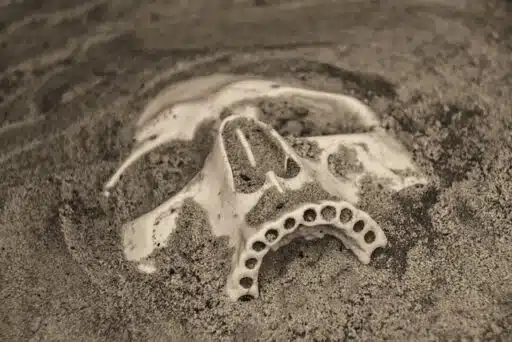Are you interested to learn about Neanderthals vs Homo Sapiens?
Have you ever wondered what sets us apart from our ancient relatives? What makes us Homo Sapiens and not Neanderthals? If you have, then you know the Neanderthal vs. Homo sapiens argument could go on for generations to come without a definite answer.

When it comes to understanding humanity, the study of Neanderthals and Homo sapiens is of particular interest. Neanderthals are our closest extinct relatives, and their similarities and differences can provide us with valuable information about our own origins and evolution.
In this article, we’ll take a look at the physical, behavioral, cognitive, and evolutionary differences between Neanderthals and Homo sapiens, as well as recent findings on Neanderthal and Homo sapien interbreeding, technology, and social structures.
By the end of this post, you should have a better understanding of the distinct characteristics that separate us from our evolutionary predecessors.
Neanderthal vs Homo Sapiens: Comparing the Species

First of all, one need to know at the time in which Neanderthals were alive, humans were hunter-gatherers.
Humans have long been fascinated with the differences and similarities between the Neanderthal and Homo sapiens. Neanderthals, extinct relatives of Homo sapiens, have intrigued us ever since their bones were first discovered in Germany in 1856.
They were the earliest humans to inhabit Europe and parts of Asia. They lived in small tribes and were nomadic hunters and gatherers. To this day, they remain shrouded in mystery as we try to uncover the secrets behind their unique features, cultural practices, and evolutionary trajectory.
Homo Sapiens are the modern humans that evolved in Africa approximately 200,000 years ago. We are the only surviving species of hominins and have spread to every corner of the world.
The evolutionary trajectory of the two species has been similarly divergent. Neanderthals went extinct roughly 40,000 years ago, while Homo sapiens remain the dominant species on Earth today. While it is unclear what led to their extinction, some believe climate change and competition with Homo sapiens may have played a role.
Overall, Neanderthals and Homo sapiens had many differences in physical attributes, cultural practices, and evolutionary trajectories. While both species are descended from a common ancestor, the divergence of these two lineages has been marked by significant differences, such as the development of both physical and cultural traits. Let’s take a closer look at these!
#1 Physical Differences
The most striking distinctions between Neanderthals and Homo sapiens lie in their physical attributes. Neanderthals boasted a more robust and stocky physique, being shorter with larger cranial capacities. They possessed broad, prominent faces with distinct brow ridges, sizable noses, and prominent chins. Their physical adaptations were geared toward cold climates, with heavy bones, shorter limbs, and smaller fingers and toes.
In contrast, Homo sapiens exhibit a taller and leaner stature, coupled with a smaller cranial capacity. Our facial features are characterized by a narrower face, a less pronounced brow ridge, a smaller nose, and chin. Our physical adaptations are tailored for warmer climates, reflected in longer limbs, fingers, and toes.
While Neanderthals had larger brains than Homo sapiens, the overall implications for intellectual advantage remain a subject of debate among researchers. Nevertheless, when we examine specific physical evolutionary traits, these two species appear to balance each other out in certain aspects when comparing Neanderthals to Homo sapiens.
#2 Height
Human height today is influenced by a number of factors like gender, country, and living conditions. However, compared to Neanderthals, people today are taller. The average worldwide height is 5 ft9 for men and 5 ft4 for women. Neanderthals, on the other hand, were, on average, between 5ft and 5 ft6 in stature.
#3 Teeth

Neanderthal life becomes more vividly understood through an analysis of their dental morphology. Researchers point out that Neanderthal teeth exhibited distinct developmental patterns compared to those of Homo sapiens. Neanderthal teeth initiated their growth at an earlier stage and demonstrated a faster rate of development compared to human teeth. Additionally, when comparing Neanderthal teeth to those of Homo sapiens, it is evident that Neanderthals had notably larger teeth with more extensive roots, conspicuous gaps following the molars, and larger pulp cavities.
#4 Skeleton
Neanderthals and Homo sapiens also have distinct bones. The former having thick and robust bones that were suitable for their intense lifestyle. Neanderthals had an asymmetric humerus in contrast to Homo sapiens, whose humerus is symmetric. Likewise they had differently shaped skulls, the Neanderthals’ being bigger. As a consequence, they also had much thicker and longer neck vertebrates to make them more stable.
#5 Morphology
Modern humans have narrow pelvises and rounded chests compared to Neanderthals with barrel-shaped chests and wider hips. Their barrel chests, straighter and longer ribs, may have allowed for better lung capacity.
#6 Strength
It is not possible to know for certain how strong Neanderthals were, but it is generally agreed that they were stronger than humans. Resulting from their challenging lifestyle, Neanderthals were well-trained and muscular. Neanderthals were expert hunters and fought mammoths, which they caught and killed. This is mighty impressive, considering a mammoth weighed between 6-8 tons. Besides capturing and consuming their prey, Neanderthals also had to carry large quantities of meat back to their families after their kills.
Behavioral and Cognitive Differences
Another striking difference between Neanderthals and Homo Sapiens is their behavior. Neanderthals were hunter-gatherers, while Homo Sapiens are more sedentary and have developed agricultural practices. So, through reasoning, you can deduce that humans take the crown in the Neanderthal vs Homo sapiens comparison in this aspect.
Neanderthals lived in small, nomadic tribes and did not have a complex social structure. Homo Sapiens, on the other hand, developed complex social structures and organized societies. We also have more sophisticated language and religious beliefs.
Neanderthals were more likely to engage in risky behavior and had a shorter time horizon. This suggests that they were less likely to plan for the future and more likely to act impulsively. They also had a larger proportion of their brains devoted to visual and spatial processing, suggesting they were more visually oriented than Homo sapiens.
In contrast, Homo sapiens are more likely to plan ahead and have a longer time horizon. We also have a larger proportion of our brains devoted to language processing, suggesting we are more linguistically oriented than Neanderthals.
Regarding behavior and cognition, there are some distinctions between Neanderthals and Homo sapiens; they include:
#1 Feeding
Neanderthals primarily hunted and ate large mammals such as elephants, mammoths, woolly rhinos, wild boars and deer. In addition, archaeological evidence suggests that Neanderthals also consumed some plants and fungi. In other words, Neanderthals mainly ate meat. Still, they also consumed a moderate amount of plants, such as tubers, berries, and nuts.
#2 Intelligence
According to research, Neanderthals were not as archaic as people assumed them to be. Additionally, there is evidence that they could pass messages and communicate effectively and that they performed rites for their dead. They may have made nominal objects and marked the graves, in addition to fire-making, tool-making, and sheltering. Additionally, they also cared for family members who were injured or sick.
#3 Speech
It has long been speculated whether Neanderthals spoke and whether they communicated using language. However, research indicates that they could speak and communicate using language. According to the same line of research, their speech ability can be deduced from the amount of space at the skull base and the vocal tract structure.
Scientist found that the base of Neanderthal skulls were less arched than humans but yet more arched than chimpanzees, which suggests they were able to produce speech. However, the speech may not be in the same sound range or as diverse as homo sapiens. Despite this, Neanderthals were very skilled at making tools and effective at hunting, indicating that they could communicate effectively – no matter how they did it.
Evolutionary Differences
The evolutionary history of Neanderthals and Homo sapiens is also quite different. Neanderthals are thought to have evolved from an earlier species of humans known as Homo heidelbergensis around 400,000 years ago. Homo sapiens, on the other hand, are thought to have evolved from Homo heidelbergensis around 200,000 years ago. This suggests that Neanderthals and Homo sapiens had different evolutionary lineages despite originating from the same ancestor, which led to the differences in their physical and behavioral traits.
However, recent findings have revealed that Neanderthals and Homo sapiens have been known to interbreed. It is believed that interbreeding between the two species took place between 50,000 and 60,000 years ago and that Neanderthal DNA still exists in the genomes of modern humans. This suggests that there was some degree of genetic exchange between the two species, which may have further contributed to the differences in their physical and behavioral traits.
Technological and Cultural Differences

Another area where Neanderthals and Homo sapiens differ is in their use of technology. Neanderthals were adept tool makers and are believed to have used a variety of stone tools for hunting and gathering. Homo sapiens, on the other hand, developed more sophisticated tools, such as spears and bows, for hunting and tool-making. This suggests that Homo sapiens were more advanced in their technological capabilities than Neanderthals.
Culturally, Homo sapiens and Neanderthals also showed significant differences. Homo sapiens were capable of producing art and sophisticated tools, while Neanderthals did not. Additionally, Homo sapiens appeared to practice burial rituals, while evidence of such practices in Neanderthal populations remains sparse. While there is evidence that Neanderthals cared for the sick and injured, further research is needed to determine if their care was as sophisticated as that of Homo sapiens.
Neanderthal vs Homo Sapiens: Did We Cause the Extinction of Neanderthals?

The fate of the Neanderthals has been a source of fascination for generations. Why did our species, homo sapiens, outlast them, and why are they no longer around? Was the Neanderthal vs Homo sapiens battle ongoing thousands of years ago? One of the leading theories is that Neanderthals went extinct due to competition with Homo sapiens.
The two species lived alongside each other for thousands of years, with both having their own territories and ways of life. The reason why humans were able to prevail over the Neanderthals is thought to be due to superior technology, such as better weapons and tools, and the ability to work together more efficiently.
Neanderthals also had a lower population than humans, which left them vulnerable to competition. Additionally, Neanderthals likely had limited access to food sources, further hindering their survival chances. It is believed that we were better adapted to warmer climates, while Neanderthals were better suited to cold climates.
Furthermore, the rise of Homo sapiens may have put added pressure on Neanderthal resources and habitats. This could have forced them into less hospitable territories, further increasing their risk of extinction.
Whatever the exact cause of their extinction, it is clear that competition between Hoomo sapiens and Neanderthals played a major role in their decline. While we may never know what happened to the Neanderthals, we can learn from their stories and strive to prevent history from repeating itself.
Neanderthal vs Homo Sapiens: The Verdict
So, what sets us apart from our ancient relatives? It is clear that Neanderthals and Homo Sapiens had many physical, behavioral, and social differences. Neanderthals had larger noses and prominent brow ridges, while Homo Sapiens had smaller noses and less pronounced brow ridges.
Neanderthals were nomadic hunters and gatherers, while Homo Sapiens were more sedentary and had developed agricultural practices. Finally, Neanderthals had a less complex social structure than Homo Sapiens.
Neanderthals were the first humans to inhabit Europe and parts of Asia and had a variety of physical characteristics that set them apart from modern humans. They also had more primitive use of tools and weapons and a less sophisticated language than Homo Sapiens.
Homo Sapiens, on the other hand, evolved in Africa approximately 200,000 years ago and had smaller noses and brow ridges, longer legs and arms, and more sophisticated use of tools and weapons. They also had a more complex social structure and organized societies. These differences and the fact that Homo Sapiens is the only surviving hominin species make it clear that we are different from our evolutionary predecessors – despite stemming from the same origin.
Thank you for reading this article! For another comparison of species that at a first glance seem similar, but which in fact are quite different, have a look at the Bombay Cat vs Black Cat.
- The Most Adorable Footage of Baby Wolves in Minnesota - April 15, 2024
- Man Teaches Bald Eagle to Play Fetch - April 15, 2024
- Mother Buffalo Tries to Save Baby From Komodo Dragons - April 14, 2024


